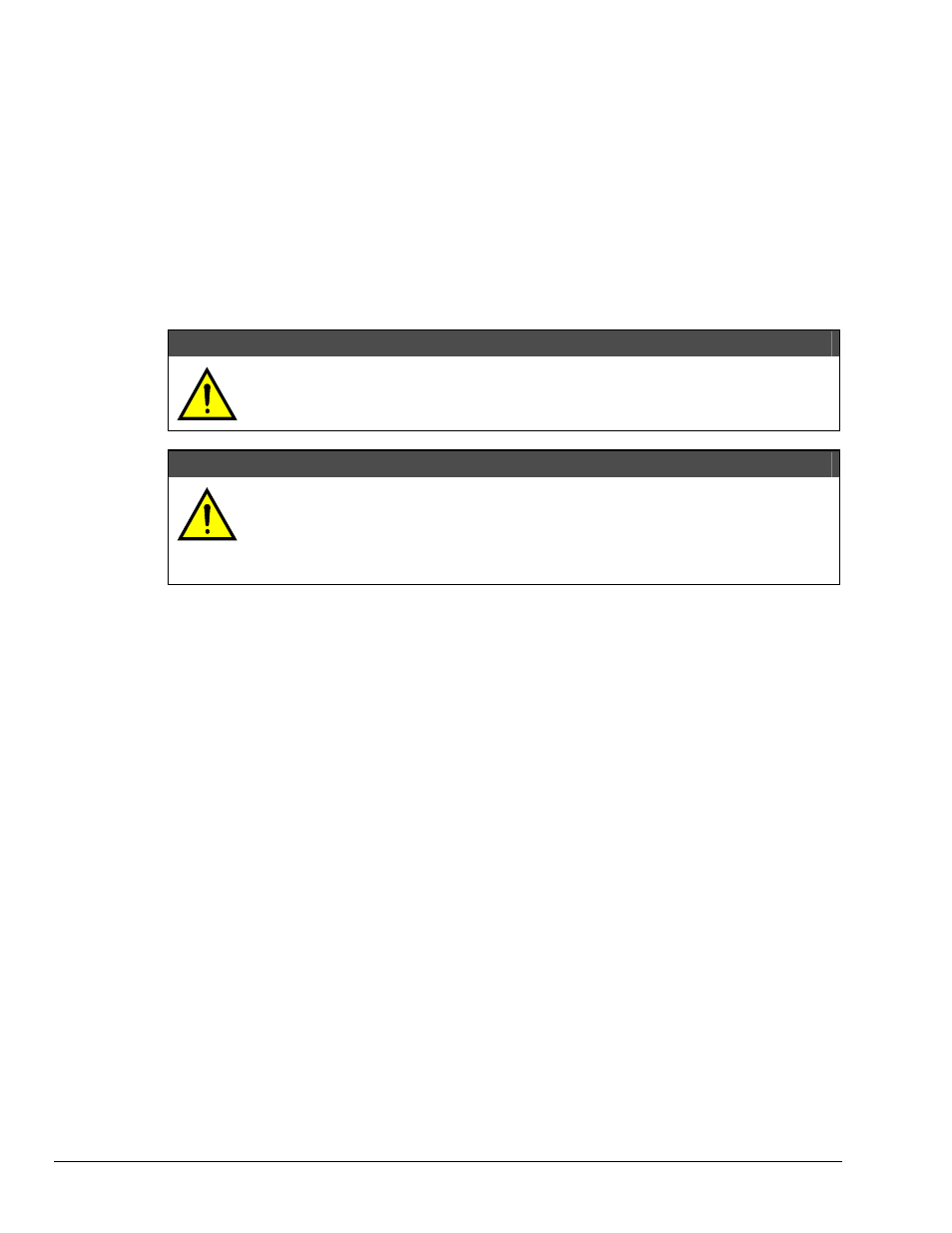Ansfer speeds…… 4, Caution, Data transfer speeds – Measurement Computing Digital488/80A User Manual
Page 10

Terminal Installation Category: Standard: Not Applicable. CE: Category 2 for Line Voltage Input
terminal. All other terminals are Category 1.
Dimensions: 425 mm wide x 45 mm high x 203 mm deep (16.75" x 1.75" x 8").
Weight: 2 kg. (4.5 lbs).
Environment: Standard: Indoor use, 0
° to 50°C; 0 to 95% RH (non-condensing).
CE: Indoor use at altitudes below 2000 meters, 0
° to 40°C; 0 to 80% RH up to 31°C decreasing
linearly 4% RH/
°C to 40°C.
Controls: Power switch (external), line voltage selection switch (internal), and DIP switch (external) for
IEEE 488 addressing mode and IEEE 488 address.
Indicators: LED indicators for TALK, LISTEN, SRQ, ERROR, TEST and POWER.
Power: Internally selectable 105-125 or 210-250 VAC; 50/60 Hz, 30 VA maximum.
Fuse: 1/2A Slo Blo 3AG (for 105-125 V power line) or 1/4A Slo Blo 3AG (for 210-250 V power line).
CAUTION
Line Voltage: The protective conductor terminal on the AC line connector must be
connected to an external protective earthing system. Failure to make such a
connection will impair protection from shock.
CAUTION
Fuse Failure: Fuse failure indicates a possible problem within the device circuitry. If a
fuse blows, contact a qualified service representative. Replacement fuses are to be
installed by qualified service personnel with the unit disconnected from the power
source and with all other terminals disconnected. If the line voltage selector is
changed, then the fuse designated for that line voltage must be used.
Data Transfer Speeds
The Digital488/80A has been measured to perform at the approximate speeds listed below. The testing
was done in such a way that the limiting factor was the Digital488/80A and not the IEEE 488 bus
controller driving it. All explanations discuss only one channel although the specifications given are valid
for either channel.
• Collection and Storage of Data: The Digital488/80A has an internal data buffer capable of storing
2000 readings of 40-bit data per channel. When operating in the
R2
mode (data are latched and
buffered on an External Data Ready transition), a transition on the EDR input causes the
Digital488/80A to collect the current value of all 40 bits and store the reading in the buffer. This
collection and storage of 40 bits of data can occur at a maximum rate of once every 140 microseconds.
• Output of Data to Ports: When sending data to the outputs on a Digital488/80A channel, the fastest
format mode is high-speed binary mode: Format (
F
) command
F5
. In this mode, 5 bytes of binary
data are accepted from the bus and sent directly to the Digital488/80A outputs (all 40 bits). This
constitutes one data transfer. The data transfer rate in this mode is approximately 1400 transfers per
second.
• IEEE 488 Bus Communication: The fastest data transfer rate across the IEEE 488 bus to the
IEEE 488 controller is approximately 1 byte every 140 microseconds whether reading data from the
internal data buffer, or accepting commands or data from the bus.
• Transistor-Transistor Logic (TTL) Levels: The data and handshake output lines drive two TTL loads.
In addition, Ports 1 and 2 on each channel can function as 5-volt CMOS-compatible outputs. All input
lines are less than 1.5 TTL loads. Normal precautions should be taken to limit the input voltages to the
range of -0.3 to +7.0 volts. All I/O lines are referenced to I/O Common (Ground; DB-50 Pin 50).
4 Digital488/80A Overview
11-07-02
Digital488/80A User's Manual